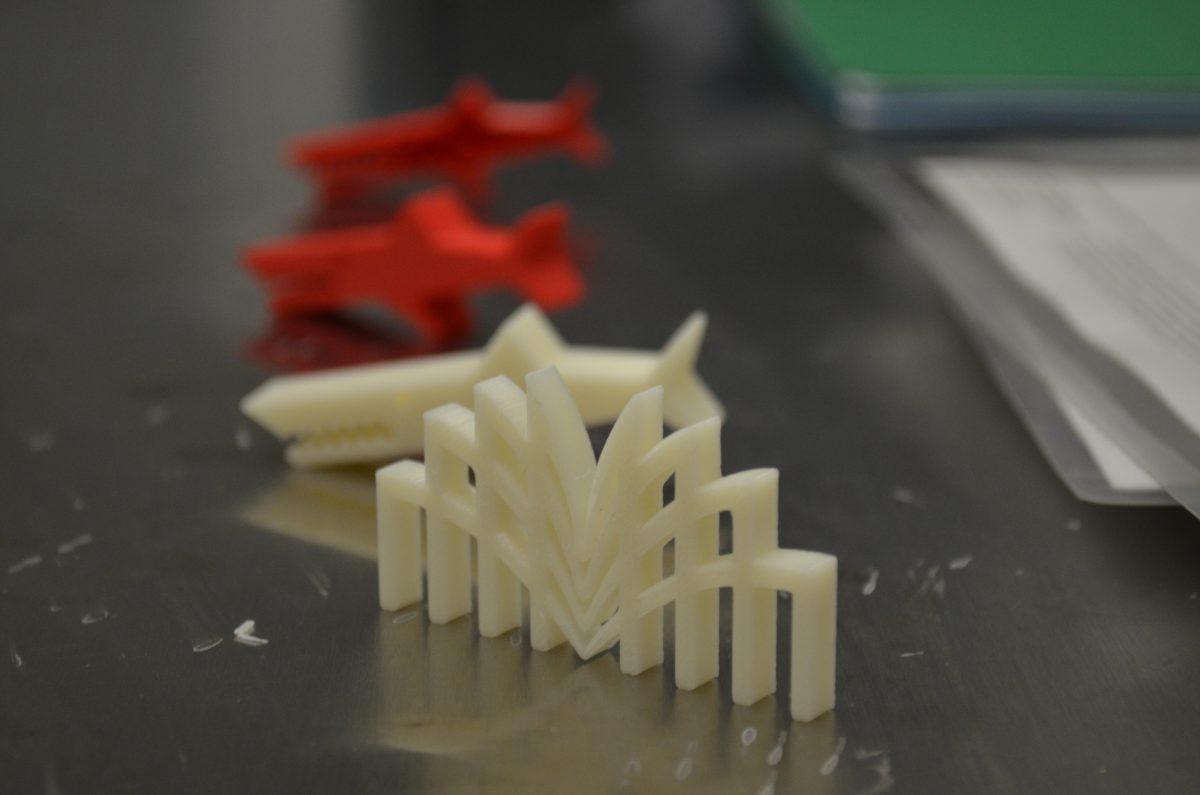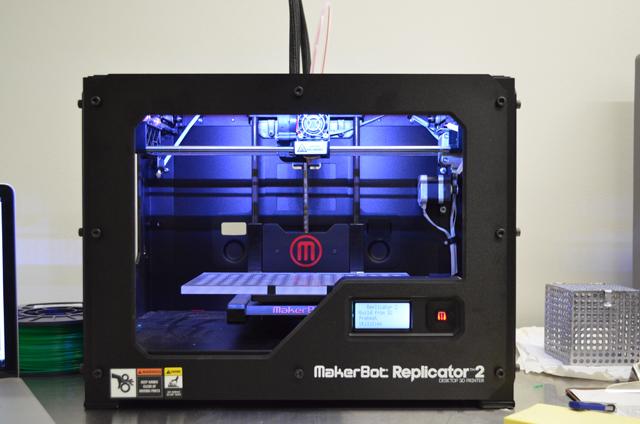With the opening of the Hunt Library, student inventors and designers no longer need to wait for support from others to see their ideas take physical shape. On the fourth floor of the new library, two machines sit, challenging the creativity of students and faculty.
The 3-D printer has been heralded as a machine that has empowered the amateur designer. Without requiring an extensive background in material science, programming, or engineering, the next generation of 3-D printers gave many a power of creation that was previously only available to people with extensive knowledge and funding.
With 3-D printing technology, it is possible for consumers to get relatively cheap one-of-a-kind objects instead of depending on only what is mass-produced.
Hunt Library houses two of these machines: a consumer-level Makerbot and a professional-level uPrint machine.
“What really excites me is that there are some people who come in here who have never heard about this before and they see it and it just blows their mind,” said Adam Rogers, an emerging technology services librarian. “Other people have heard about it and they come in here and they actually see what the models look like and how the printers work and they leave understanding the printers better. And there are people who have been reading about these a lot and have been really enthusiastic but they haven’t had access.”
Rogers is one Hunt Library employee who taught students about the capabilities of the 3-D printer during the first few days after the Hunt Library’s opening. He said that he and others will continue to be available throughout the semester to help students print their models.
Although several procedures still have yet to be finalized, the 3-D printers at Hunt Library are operational and ready for students to use.
According to Rogers, students can come during the 3-D printers’ operating hours of between 2 p.m. and 8 p.m. with an STL file of their design and a Hunt Library employee should be available to help create a model from it.
“You can give us a file and then we can talk through certain decisions like what machine you want to use and then we’d agree on a process and a price. We then have a form that you’d fill out and then we’d tell you that it’s going to be a day or two days and then you can come back and pick up your model,” Rogers said.
Students can create STL files from programs such as Solidworks, Autocad, Inventor, Tinkercad, Rhinoceros and Sketchup.
Rogers said that the 3-D Printing jobs at the Hunt Library are charged by the amount of material used. However, students will know how much each design will cost before they are printed.
“I think these machines are astounding,” Rogers said. “It’s really kind of a challenge to students and other people on campus to see what they are going to make with these machines. The machines are here for you all. What are you going to make?”
The MakerBot Replicator 2 is one of the 3D printers available for student use in the new Hunt Library.









